
Jan Brueghelthe Elder was a Flemish painter and draughtsman. He was the son of the eminent Flemish Renaissance painter Pieter Bruegel the Elder. A close friend and frequent collaborator with Peter Paul Rubens, the two artists were the leading Flemish painters in the first three decades of the 17th century.
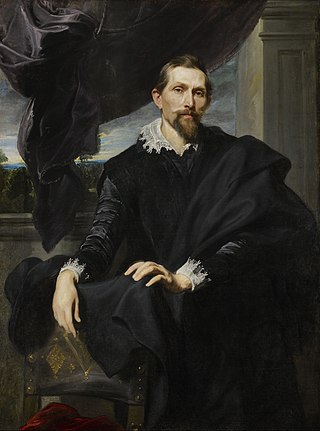
Frans Snyders or Frans Snijders was a Flemish painter of animals, hunting scenes, market scenes, and still lifes. He was one of the earliest specialist animaliers and he is credited with initiating a wide variety of new still-life and animal subjects in Antwerp. He was a regular collaborator with leading Antwerp painters such as Peter Paul Rubens, Anthony van Dyck, and Jacob Jordaens.
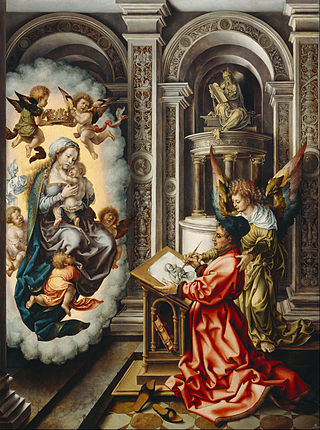
Romanism is a term used by art historians to refer to painters from the Low Countries who had travelled in the 16th century to Rome. In Rome they had absorbed the influence of leading Italian artists of the period such as Michelangelo and Raphael and his pupils. Upon their return home, these Northern artists created a Renaissance style, which assimilated Italian formal language. The style continued its influence until the early 17th century when it was swept aside by the Baroque.

The Royal Museum of Fine Arts Antwerp is a museum in Antwerp, Belgium, founded in 1810, that houses a collection of paintings, sculptures and drawings from the fourteenth to the twentieth centuries. This collection is representative of the artistic production and the taste of art enthusiasts in Antwerp, Belgium and the Northern and Southern Netherlands since the 15th century.
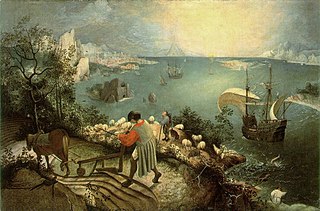
Dutch and Flemish Renaissance painting represents the 16th-century response to Italian Renaissance art in the Low Countries, as well as many continuities with the preceding Early Netherlandish painting. The period spans from the Antwerp Mannerists and Hieronymus Bosch at the start of the 16th century to the late Northern Mannerists such as Hendrik Goltzius and Joachim Wtewael at the end. Artists drew on both the recent innovations of Italian painting and the local traditions of the Early Netherlandish artists.

Maerten de Vos, Maerten de Vos the Elder or Marten de Vos was a Flemish painter. He is known mainly for his history and allegorical paintings and portraits. He was, together with the brothers Ambrosius Francken I and Frans Francken I, one of the leading history painters in the Spanish Netherlands after Frans Floris career slumped in the second half of the sixteenth century as a result of the Iconoclastic fury of the Beeldenstorm.

Simon de Vos was a Flemish painter, draughtsman and art collector. He started his career making small-format cabinet pictures of genre scenes, in particular of Caravaggesque merry companies. Later he switched to history painting, working on larger formats in a Flemish Baroque style which was influenced by Rubens and van Dyck.

Flemish Baroque painting was a style of painting in the Southern Netherlands during Spanish control in the 16th and 17th centuries. The period roughly begins when the Dutch Republic was split from the Habsburg Spain regions to the south with the Spanish recapturing of Antwerp in 1585 and goes until about 1700, when Spanish Habsburg authority ended with the death of King Charles II. Antwerp, home to the prominent artists Peter Paul Rubens, Anthony van Dyck, and Jacob Jordaens, was the artistic nexus, while other notable cities include Brussels and Ghent.

Frans Francken the Younger was a Flemish painter and the best-known and most prolific member of the large Francken family of artists. He painted large altarpieces for churches as well as smaller historical, mythological and allegorical scenes. His depictions of collectors' cabinets established a popular new genre of art in the era. Francken often collaborated with other artists, adding figures and narrative elements to scenes created by specialists in landscape, architectural and floral still life paintings.

Tobias Verhaecht (1561–1631) was a painter from Antwerp in the Duchy of Brabant who primarily painted landscapes. His style was indebted to the mannerist world landscape developed by artists like Joachim Patinir and Pieter Bruegel the Elder. He was the first teacher of Pieter Paul Rubens.

Jan Wildens was a Flemish painter and draughtsman specializing in landscapes. His Realist landscapes show an eye for detail and have a serene character. He was a regular collaborator with Rubens and other leading Flemish Baroque painters of his generation in whose compositions he painted the landscapes.

Ambrosius Brueghel was a Flemish painter from the famous Brueghel family of artists. Less prolific and less well-known than a number of his family members, his oeuvre is not very well understood and is believed to comprise Baroque still lifes, garland paintings as well as landscapes.
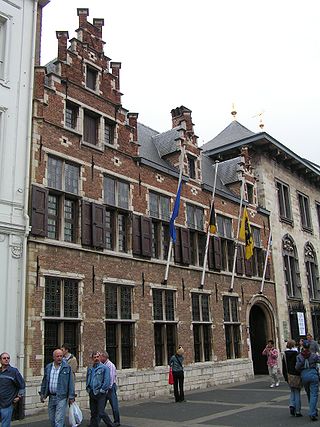
The Rubenshuis is the former home and workshop of Peter Paul Rubens (1577–1640) in Antwerp. Purchased in 1610, Rubens had the Flemish townhouse renovated and extended on the basis of designs by Rubens himself. After the renovations, the house and its courtyard garden had the outlook of an Italian palazzo, which reflected the artistic ideals of Rubens. The ensemble is now a museum dedicated mainly to the work of Rubens and his contemporaries.

Adriaen or Adriaan van Stalbemt or Adriaen van Stalbempt was a Flemish painter and printmaker who is known for his landscapes with religious, mythological and allegorical scenes. He was also a gifted figure painter who was regularly invited to paint the staffage in compositions of fellow painters.
Roger de Piles's L'Abrégé de la vie des peintres...avec un traité du peintre parfait was a major art biography of painters. It was written by the French spy Roger de Piles. In 1692, during the War of the League of Augsburg, he was arrested in the Hague carrying a false passport and imprisoned for the next five years, where he wote his L'Abrégé in 7 parts; 1) Sketch of the perfect painter, 2) Greek painters; 3) Painters from Rome & Florence; 4) Painters from Venice; 5) Painters from Lombardy; 6) Painters from Germany and the Low Countries; 7) Painters from France and ending with his famous "Balance of painters". The book was finally published in 1699 following his appointment as Conseiller Honoraire to the Académie de peinture et de sculpture in Paris.
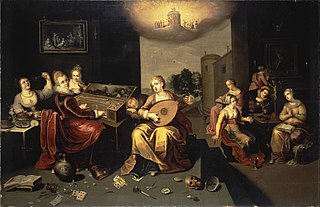
Hieronymus Francken the Younger or Hieronymus II was a Flemish painter and one of the most prominent members of the large Francken family of artists. Along with his brother Frans Francken II he played an important role in the development of new genres in Flemish art in the early 17th century. He was a prolific artist with a wide range who painted religious scenes, allegorical subjects, portraits, fruit pieces, genre scenes, architectural paintings and art galleries.
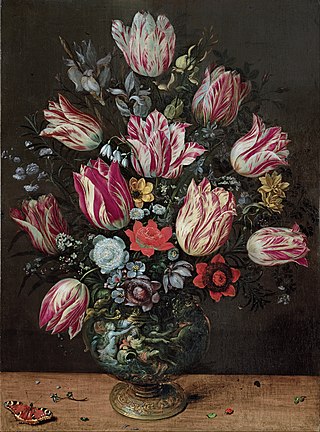
Andries Daniels was a Flemish painter who was active in Antwerp during the first half of the 17th century. He is known for his flower still lifes and garland paintings, a genre of still life paintings that he helped develop in Antwerp.
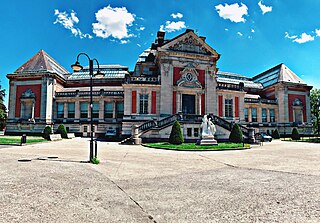
The musée des beaux-arts de Valenciennes is a municipal museum in the French town of Valenciennes. Its collections originated as the collection of the Académie valenciennoise de peinture et de sculpture. It opened to the public for the first time in 1801 and was moved into the town hall in 1834.
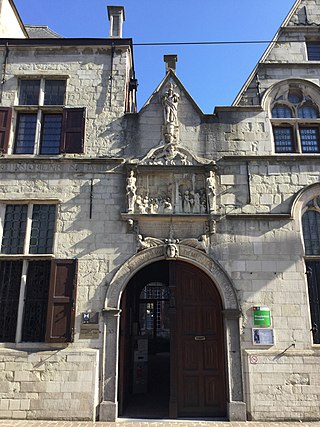
The Maagdenhuis Museum is an art museum and historical museum located in a 17th-century historic building on Lange Gasthuisstraat, Antwerp, Belgium. The building was used as an orphanage for the maegdeckens, or maidens, from the mid-16th century to the end of the 19th century. The museum presents a collection of utensils used daily by the foundlings and the orphans; a collection of antique furniture, and a series of documents relating to the orphanage and the life in it from the 16th century to 19th century.


















